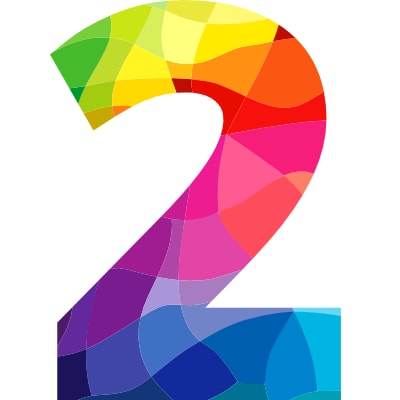Create a Better Contact Page

As a website owner, you probably haven’t put too much thought into your contact page, but in reality, it is one of the most important pages on your website and could make the difference between someone just browsing and making a purchase.
Customers buy from people and companies they know, like, and trust. Your contact page helps you create that trust factor by giving your website visitors easy ways to ask you questions.
For those of you who don’t have a contact page on your website, or want to improve it, I have five suggestions of what you can add to this page to help your website visitors connect with you and get their questions answered so that they convert into paying customers. They are:
- Contact form or your email address
- Links to your social media pages
- Phone number
- Address, Map, and Hours
- FAQs
Not all of these will be relevant to all businesses, but start thinking about which ones would help you nurture the know, like, and trust value of your business.
Contact Form or Email Address

You want your website visitor to be able to easily ask you questions, and one of the best ways to do this is with a contact form. There are two big benefits of contact forms.
First, you can reply at a time that is convenient for you – for example, you might do most of your focused work in the morning and want to reply to questions later in the day.
The second benefit to forms is that you can ask, or even require, that people give you certain pieces of information – for example, you might like to have a quick phone call with potential buyers to give that extra personal touch. Or you might want to learn how people found your business. With forms you can ask questions to fit the information you need from potential buyers.
But keep in mind two “downsides” of forms.
First, if you ask too many questions people might decide not to fill it out, and then you lose them as a customer. My suggestion is to only ask for information that you need in order to answer questions and improve your chances of gaining a new customer. Some things to think about
- Do you really need to know their last name? Many website owners are leaving that off forms these days.
- Many people will not want to give out their phone number or address to a company that they don’t yet trust.
- Phrase open-ended questions so that you get the information you need to give a good answer so that you aren’t needing to have a long back-and-forth correspondence.
Second, you need to test your website forms on a regular basis to make sure they are always working as expected and you are receiving people’s questions. You can’t respond to people if you never get notified that someone submitted a form!
If you aren’t going to maintain a form, then I recommend putting your email address on the contact page. If you go this route, make sure that the email address is a clickable link and it opens up to a new email with your address already filled in.
Links to social media pages

If you are on any social media platforms, you should give your website visitors links to easily access those accounts to learn more about you and your products or services. This gives your website visitors another way to get in touch with you and learn more about your business. If you have direct messaging enabled for your accounts, your visitor may be able to reach you and get their answer faster than by sending you an email.
When I talk about social media accounts, I am referring to accounts that are business related, don’t link someone to your personal social media accounts – they don’t need to see the pictures of your last vacation!
But if you use social media for your business, then definitely give links to those accounts. Here is a partial list to jog your memory of what social media accounts you might be using to showcase and promote your business:
- Facebook business page
- Facebook group that you run
- TikTok
Phone Number

If you want potential customers to be able to reach you immediately during your business hours, then you definitely want to add your phone number to your contact page. For example, if you own a book store you might want people to be able to call you to see if you have a book in stock, or a restaurant owner may allow people to call ahead and put their name on a waitlist.
If you want potential customers to be able to reach you immediately during your business hours, then you definitely want to add your phone number to your contact page. For example, if you own a book store you might want people to be able to call you to see if you have a book in stock, or a restaurant owner may allow people to call ahead and put their name on a waitlist.
On the other hand, you might run a service based business, and not take impromptu calls. So instead, it is better for you to ask for customers’ phone numbers so you can call them back at a time that is more convenient for your.
If you do put your phone number of your website, make sure that it is set up as “click-to-call”. Approximately half of your website visitors will be looking at your contact page on their phone, so if you give them your phone number you definitely want them to be able to tap on that number and it to automatically bring up their phone app and make the call to you.
Address, Map, and Hours

If you have a “brick and mortar” location, then you definitely need to have your address, hours, and a map on your contact page.
You don’t want it to be a mystery to your potential customers about where to find you. Clearly showing where you are located, what hours you are open, and how to get there will greatly increase the chances a potential customer will stop by your store.
By adding a map to your website, you are going one step further to make it easy for people to find you.
FAQs

Many times you are answering the same questions over and over. Save yourself and your prospective customers time by adding frequently asked questions (FAQs) to your contact page.
Answering questions that your website visitor hasn’t even asked will impress your website visitor and allow them to make a buying decision faster, especially if they have questions during non-working hours.
Conclusion
I challenge you to go back and look at your contact pages and improve them to attract more paying customers.
First, make sure all of your information is correct and up-to-date. Then decide if you can add anything – maybe you don’t have links to your social media pages? Or maybe add a frequently asked question section so that your website visitors can get their questions quickly answered and not have to wait for you to respond (and save you time from answering the same question over and over).
Drop me an email (lisa@enterprisinggals.com) and let me know how you improved your contact page after reading this blog!
